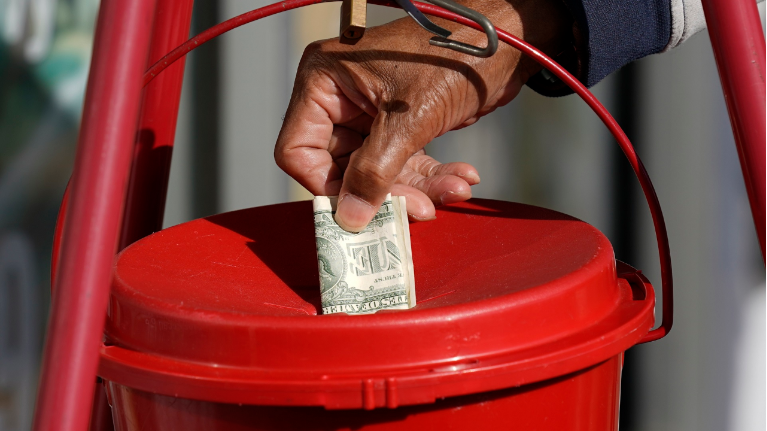The holiday season is traditionally a season of giving. There are hundreds of thousands of charities big and small across the country asking for donations at the end of the year.
Figuring out the best nonprofit to give money to can be tricky. There are local food banks, organizations that work with homeless and international relief groups. There are also scammers out there, looking to take advantage of people’s generosity.
The Better Business Bureau warns people to be wary of overly emotional appeals or making quick decisions to donate to a group they’ve never heard of. The BBB advises people to slow down and do their research before donating money this holiday season.
When looking to make a donation on Giving Tuesday or any other time of the year, here are five tips to make sure your money is going to the right place.
A good charity spends most of its money on its programming, like running an animal shelter or building hospitals and schools in far-flung reaches of the world.
Charity Navigator, which ranks nonprofits, says organizations need to spend at least 70% of donations on program activities and no more than 30% on things like executive pay and fundraising costs.
To be listed on the Better Business Bureau’s Wise Giving Alliance, organizations need to spend at least 65% on programming.
The Wise Giving Alliance, online at give.org, ranks nonprofit organizations on 20 different criteria, which include how the organization is governed, how much they spend on fundraising, how transparent they are and how well they measure their own effectiveness.
Sites like Charity Navigator and the Wise Giving Alliance make it easy for people to search for a specific charity or browse through topics to find new organizations.
Smaller, local nonprofits may not be listed with these national organizations. So if you want to check out the local food bank or animal shelter, you may need to do a little extra legwork to make sure donations are being spent on the nonprofit’s actual mission.
The first step is to check if a charity is, in fact, a real nonprofit and registered with the IRS. The IRS has a database of all 501(c)3 nonprofits and includes tax returns for many of them on the Tax Exempt Organizations search page. To accept tax-deductible contributions, a charity must have what’s called 501(c)3 status from the IRS.
Organizations that raise less than $25,000 a year file what’s called a 990-N postcard, which has limited information about how money is spent. But nonprofits taking in more than that file a longer Form 990, which has more details about how money is spent, the board of directors and the top paid staff.
The IRS database and sites like GuideStar that compile nonprofit tax information will have the latest filings, which typically run a year or two behind. But the most recent 990 should have what you need.
Charity Navigator and the Wise Giving Alliance will have rankings for how well charities spend their money. But if a nonprofit is not listed there, check the 990 forms on the IRS site or GuideStar.
According to Charity Navigator, here are the most important things to check on the nonprofit tax returns:
- Executive pay: Page 7 will list pay for the CEO and anyone else in the organization making more than $100,000 a year
- Program spending: Page 10, line 25 will list “total functional expenses” and “total expanse”
- Professional fundraisers: If the organization pays professional fundraisers to solicit donations, those expenses will be listed in Part 1, line 16a. If the nonprofit filed a Schedule G, that will give a more detailed breakdown of fundraising expenses
- Revenue sources: The “Statement of Revenue” on page 9 will show where a nonprofit gets its money from, whether that’s grants, memberships or donations. A healthy nonprofit will have a good mix of revenue from different sources
Crowdfunding sites like Kickstarter and GoFundMe are different from giving to a charity and typically do not involve tax-deductible donations. The companies and people raising money on crowdfunding sites are much harder to verify.
Kickstarter is widely regarded as a reliable platform where entrepreneurs appeal for money from the public to help get a new business idea off the ground. GoFundMe is geared more toward individuals and charities to raise money online. But people should make sure to check out who they are giving money to before they press the donate button.
Scams have become part of the holiday season too. Some common scams include using names similar to major charities to fool people into giving money, or contacting people by phone or email with phony requests for donations, according to the IRS.
“Fraudulent schemes normally start with unsolicited contact by telephone, text, social media, e-mail or in-person using a variety of tactics,” the IRS warns. “Bogus websites use names similar to legitimate charities to trick people to send money or provide personal financial information.”
There are tens of thousands of good charities across the country. But the bottom line is, before making a donation, make sure you're giving to the right organization that is spending money responsibly to help whatever cause you want to support.



